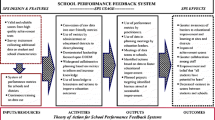Abstract
In the context of twenty-first century educational reform efforts, school choice options have led to an increase in the number of Afrocentric charter schools. As a school choice option, charter schools that incorporate an Afrocentric approach are more prevalent in large urban school systems disproportionately populated by African-American children and youth. This study examined available data on the performance of Afrocentric charter schools based on their standardized statewide adequate yearly progress (AYP) status. Using systematic research methodology, a keyword search of research databases and internet search engines, 27 Afrocentric charter schools in the USA were identified. Twenty three of the schools met the criteria for analysis, and only 34 % of those schools achieved or exceeded statewide standards in testing and met their state’s AYP goals. Implications for future studies are discussed. The research team contends that Afrocentric charter schools must gain greater legitimacy, using standardized accountability measures, in order to become a credible school choice option to failing urban public schools.
Similar content being viewed by others
References
Asante, M. K. (n.d.). Afrocentric curriculum. Retrieved from http://www.valdosta.edu/~cawalker/afrocentric.htm.
Asante, M.K. (1987). The afrocentric idea. Philadelphia: Temple University Press.
Bush, L. (2004). Access, school choice, and independent black institutions: a historical perspective. Journal of Black Studies, 34, 386–401.
Florida Department of Education. (2006). Florida’s charter schools a decade of progress. Tallahassee: Florida Department of Education.
Frankenberg, E. & Siegel-Hawley, G. (2009). Equity overlooked: Charter schools and civil rights policy. Los Angeles, CA: University of California Los Angeles, The Civil Rights Project. Retrieved from http://www.civilrightsproject.ucla.edu/research/deseg/equity-overlooked-report-2009.pdf.
Friedman, B., Bobrowski, P., & Geraci, J. (2006). Parents’ school satisfaction: ethnic similarities and differences. Journal of Educational Administration, 44(5), 471–486.
Gay, G. (2010). Culturally responsive teaching: theory, research and practice. New York: Teachers College Press.
Hilliard, A. G. (1997). SBA: the reawakening of the African mind. Florida: Makare.
Hoffman, N. (2009). Charters left and right: comparing charter schools in Idaho and Chicago. Retrieved from http://www.boiseweekly.com/boise/charters-left-and-right/Content?oid=1362919.
Editorial Projects in Education Research Center (2011, July 18). Issues A-Z: adequate yearly progress. Education Week. Retrieved July 25, 2014 from http://www.edweek.org/ew/issues/adequate-yearly-progress/.
Larson, D. B., Pastro, L. E., Lyons, J. S., & Anthony, E. (1992). The systematic review: an innovative approach to reviewing research. Washington: U.S. Department of Health and Human Services.
Lauen, D. (2007). Contextual explanations of school choice. Sociology of Education, 80, 179–209.
Murrell, P. (1999). Chartering the village: the making of an African-centered charter school. Urban Education, 23(5), 565–583.
National Alliance for Public Charter Schools. (2009a). Charter school achievement: what we know (5th ed.). Washington, DC: Author. Retrieved from http://www.publiccharters.org/files/publications/Summary%20of%20Achievement%20St udies%20Fifth%20Edition%202009_Final.pdf.
National Alliance for Public Charter Schools. (2009b). Number of public charter schools and students: 2009-2010. Washington, DC: Author. Retrieved from http://www.publiccharters.org/enrollment.
National Alliance for Public Charter Schools. (2009c). Top 10 charter communities by market share (4th ed.). Washington, DC: Author. Retrieved from http://www.publiccharters.org/files/publications/MarketShare_P4.pdf.
Okpala, C. O., Bell, G. C., & Tuprah, K. (2007). A comparative study of student achievement in traditional schools and schools of choice in North Carolina. Urban Education, 42(4), 313–325.
Ravitch, D. (2010). The death and life of the great American school system: how testing and choice are undermining education. New York: Basic Books.
Schwartz, I., & White, T. (2000). Chapter nine: privatization and education: charter schools and voucher programs. Paper presented at conference Privatization of Social Services, Philadelphia, PA
Shockley, K. G., & Frederick, R. M. (2010). Constructs and dimensions of Afrocentric education. Journal of Black Studies, 40(6), 1212–1233
Swanson, B. (2008, April). Cities in Crisis. Bethesda, Maryland: Editorial Projects in Education Research Center 1–14.
The Center for Education Reform. (2009). Race to the top. Retrieved from http://www.edreform.com/in_focus/race_to_the_top/.
U.S. Department of Education. (2005). America’s charter schools: results from the NAEP 2003 pilot study [Report No.NCES 2005–456]. Washington: Author, Institute of Education Sciences.
U.S. Department of Education (2015). Institute of Education Science, National Center for Education Statistics. Charter Schools. Retrieved: https://nces.ed.gov/fastfacts/display.asp?id=30
Vanourek, G. (2006). State of District of Columbia Charter school sector: a ten year review. Washington: Fight for Children.
Weiher, G., & Tedin, K. (2002). Does choice lead to racially distinctive schools? Charter schools and household preferences. Journal of Policy Analysis and Management, 21(1), 79–92.
Zhang, H., & Cowen, D. J. (2009). Mapping academic achievement and public school choice under the no child left behind legislation. Southerneastern Geographer, 49(1), 24–40.
Author information
Authors and Affiliations
Corresponding author
Ethics declarations
Conflict of Interest
The authors declare that they have no competing interests.
Appendix
Appendix
Rights and permissions
About this article
Cite this article
Teasley, M., Crutchfield, J., Williams Jennings, S.A. et al. School Choice and Afrocentric Charter Schools: a Review and Critique of Evaluation Outcomes. J Afr Am St 20, 99–119 (2016). https://doi.org/10.1007/s12111-015-9322-0
Published:
Issue Date:
DOI: https://doi.org/10.1007/s12111-015-9322-0




